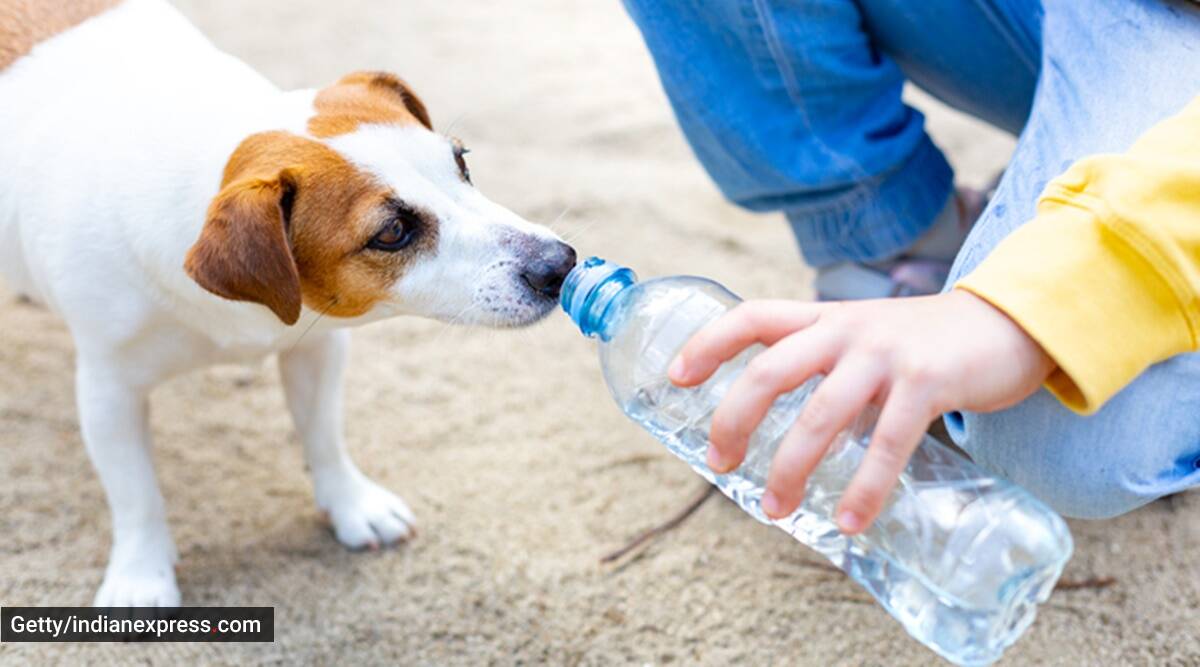- July 27, 2022
- No Comment
- 5 minutes read
How to identify a heat stroke or dehydration in pets – The Indian Express

Just like human beings, animals go through bouts of dehydration, too. It can lead to severe health issues that can turn fatal as well.
It should be kept in mind that summers can be unforgiving for your pet’s health. Dr Ajay Satbige, veterinary officer at Wiggles warns that pets can suffer from dehydration, tick fever and heat stroke. “Some of these problems can cause excessive panting; many times, it causes discomfort, too. Drooling, vomiting, diarrhea, mental dullness, lethargy and unconsciousness are all symptoms,” he says.
The doctor adds that symptoms of dehydration in dogs can include dry mouth, thick saliva, sticky gums, loss of appetite, sunken eyes, etc.
“Once you notice your pet experiencing any of these, take them to the vet immediately.”
Here, Dr Satbige lists some urgent dos and don’ts:
* Excessive drooling: Keep an eye on excessive drooling or drool that is thicker than usual.
* Fever: Your dog’s nose should be wet and cool, if it’s dry and hot, it could mean that your pet has a fever.
* Diarrhea: Loose/abnormal stool or one with blood is a sign of danger.
* Lack of urine: Difficulty passing urine can be a sign of overheating.
* Weakness: Dehydration can cause excessive sleeping or difficulty in standing or walking.
“If you notice any of these signs, get a cool towel, put it on them and call a veterinarian immediately.”
Some cool measures to follow to avoid heatstroke and dehydration:
1. Do not leave your pets in closed cars
Even if you leave a window open and have parked under a shaded area or left the AC on, it is never a good idea to leave your pets alone in the car. This is one of the most common reasons for heat strokes.
2. Keep fresh water available at all times
Keeping your pet well hydrated is of utmost importance. A clean and fresh bowl of water should be kept accessible to your pets at all times. If you’re stepping out, ensure you carry a bottle of water and a bowl to keep your pet hydrated.
3. Change their walking time
If your pet is used to walking during the late mornings/afternoons, it is recommended to change their walking time and take them out during the early morning hours or late evenings when the sun is down and the ground is cooler.
4. Invest in a covering for shade
If your dog likes to sit in the backyard or on the balcony, you can cover a small area with a sheet that acts as a shade. This keeps the ground cool and stops the sun rays from directly falling on them.
5. Keep medicines handy
It is advisable to keep an emergency kit handy. Ensure you have unflavored ORS and antiemetic medicines with you.
6. Add cooling ingredients to their diet
Curd, buttermilk, coconut water, watermelon and cucumber will help keep heat-related problems at bay. Ensure you de-seed and wash all fruits and vegetables before giving them to your dog.
📣 For more lifestyle news, follow us on Instagram | Twitter | Facebook and don’t miss out on the latest updates!
📣 The above article is for information purposes only and is not intended to be a substitute for professional medical advice. Always seek the guidance of your doctor or other qualified health professional for any questions you may have regarding your health or a medical condition.
For all the latest Lifestyle News, download Indian Express App.

